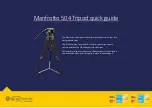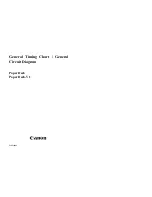
burster Italia s.r.l. · Sede legale ed operativa · Via Cesare Battisti, 16/18 · 24035 Curno (BG) · Tel. +39 035 618120 · Fax +39 035 618250
e-mail:
· http://
www.burster.it
C.F. e P.IVA 11048400151 · Capitale sociale Euro 49.920,00 · R.E.A. di Bergamo 276749
Apparecchi di misura di precisione. Sensori e Sistemi
per grandezze elettriche, termiche e meccaniche
3.2.1 Torque Sensors of 5 N·m to 15 N·m
Sensors with nominal torques below 20 N·m are very sensitive to overload, therefore these sensors need
to be handled with greatest caution.
1. Connect the sensor electrically during the assembly and observe the measuring signal; the limit values may
not be exceeded in any case.
2. Align the arrangement before the parts are connected firmly.
3. Assemble the sensor at the low torque resistance side first, then at the stationary side
(this avoids impermissibly large torques from acting on the sensor).
4. Counter-hold by hand, so that impermissibly large torques or disturbance variables cannot act on the torque
sensor.
3.2.2 Torque Sensors from 20 N·m
The hub must fit corresponding to the connection.
3.3
Freefloating Assembly
The sensor is installed between two single-jointed couplings and contributes to the
balance of an inevitable axis offset between the two mechanical connections
.
If no couplings are used, very large transverse forces can affect the sensor. In addition,
large forces occur on the bearings in drive and output, which limit their life span very
strongly.
Shift couplings on shafts (use entire clamping length of the coupling) and align shafts.
Assure absolutely that the data of the couplings (axis offset, angular offset, tension,
compression) are not exceeded.
Caution:
During the assembly inadmissibly large forces may not act on the sensor or the couplings
.
The housing must be protected from twisting e.g. by a flexible connection. The cable connection may not be used for
this.
The cable connection must be placed loosely (form of goose neck), so that it can follow the light movements of the
stator.
In this case, with both single-jointed couplings, the torque sensor forms a double-jointed coupling.
A single-jointed coupling can only balance axial and angular misalignments.
In this installation case, double-jointed couplings can not be used for both sides!
Risk of Breakage!
Flexible connection for
housing fixation
Drive
Single-jointed coupling
Single-jointed coupling
Output
Torque sensor
Cable connection































